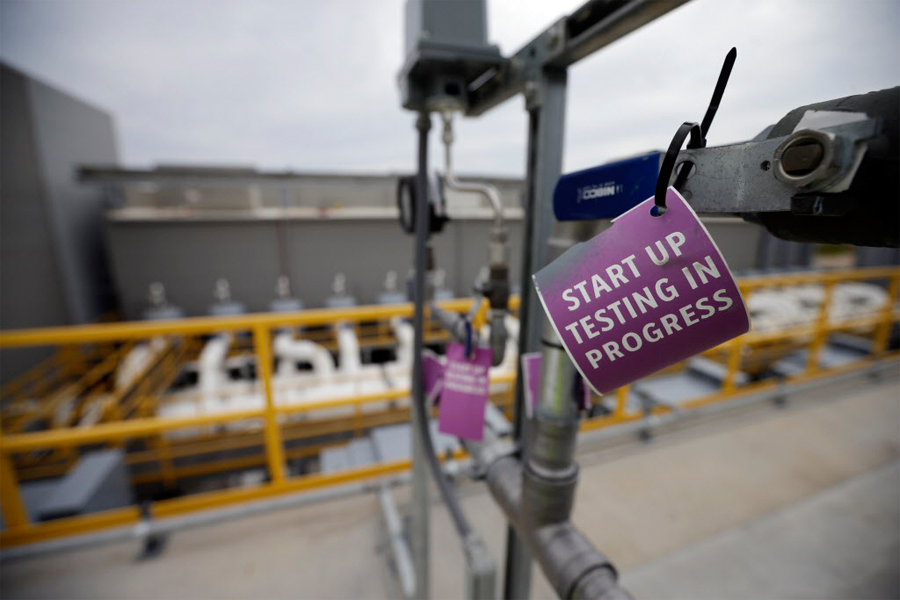San Diego desalination plant could ease California's water woes
Loading...
San Diego is nearing completion on a desalination plant that can provide potable water to its citizens, offering a possible solution to the drought crisis that has gripped the state since 2011.
The project is privately funded by the Poseidon Water Company, which uses a public-private partnership model to identify stakeholders and develop its projects. The company is in the late stages of developing a similar desalination plant for Huntington Beach.
The desalination plant will be located at the Encina Power Station in San Diego County, on the Agua Hedionda Lagoon, which feeds into the Pacific Ocean. When the plant is completed in mid-December, it will initially provide water to 112,000 homes. Poseidon Water projects that ultimately the plant will be able to provide 50 million gallons of desalinated water to 300,000 San Diego residents, or 7 percent of the city’s water supply, by 2020.
Desalination works by removing salt and other minerals from seawater. When saltwater is forced through semipermeable membranes at very high pressure, it separates the water and salt, through a process called reverse osmosis.
The San Diego County Water Authority has already tested and proved using this technology on groundwater, which has accounted for 6 percent of the region’s water needs since 2011. The Water Authority reports that desalination could provide additional solutions, primarily through reducing "the region’s dependence on water from the Colorado River and the Bay-Delta.”
The desalination plant in San Diego is designed to avoid over-salting the ocean: of the one hundred million gallons of saltwater that will be delivered to the plant each day, half will be converted into usable salt water, while the other half, which will become seawater with a very high salt content, will be diluted with discharged seawater from the power plant and then discharged into the ocean.
Other countries have already proved that desalination works. Israel especially has been a model of innovation in this field, exporting many of its drought-defying innovations abroad.
And during the “Millennium Drought,” from 1997 to 2009, southern Australia experienced historically low levels of rainfall. This prompted Australia to invest some $11 billion in desalination technologies. The two desalination plants that were built in Perth now supply 45 percent of the city’s drinking water.
Upon learning about the Encina plant, Neil Palmer, CEO of the National Centre for Excellence in Desalination in Australia, wrote a congratulatory letter to to San Diego.
"Our real-world experience in Western Australia leaves us in no doubt that the Carlsbad desalination plant will be a great success," he wrote. "We learned that it is important to develop a diverse portfolio of water resources that act independent of weather and climate, including desalination, recycling and conservation, and the entire San Diego region will benefit from the Carlsbad facility going online."






